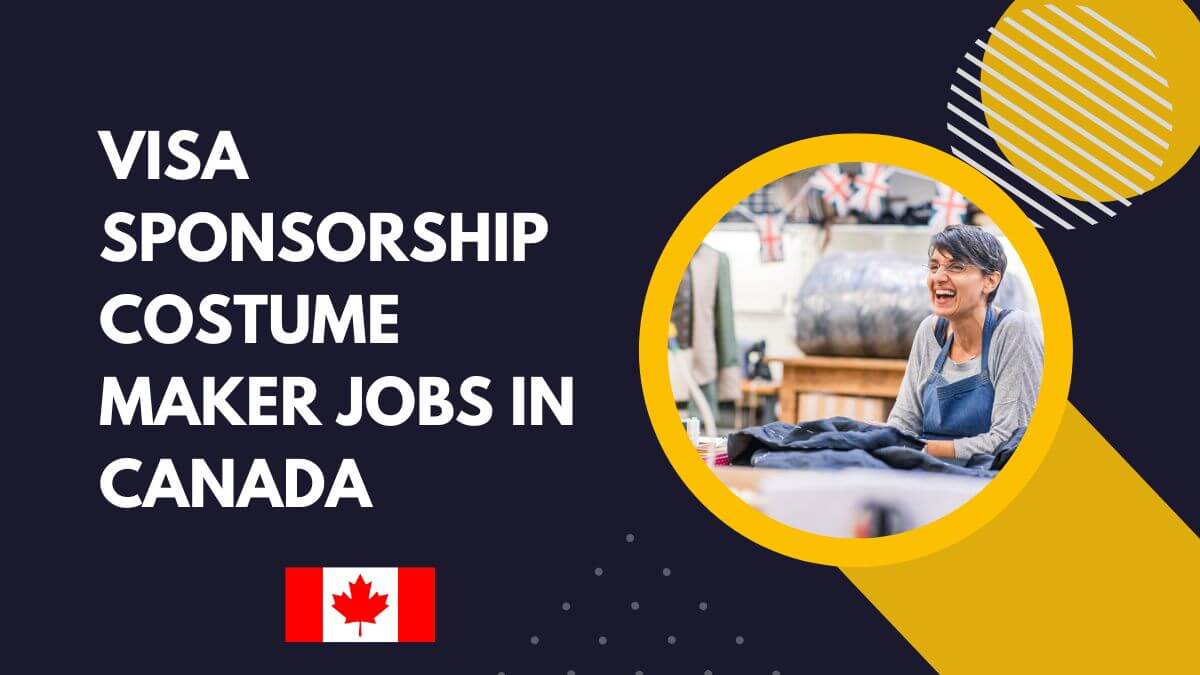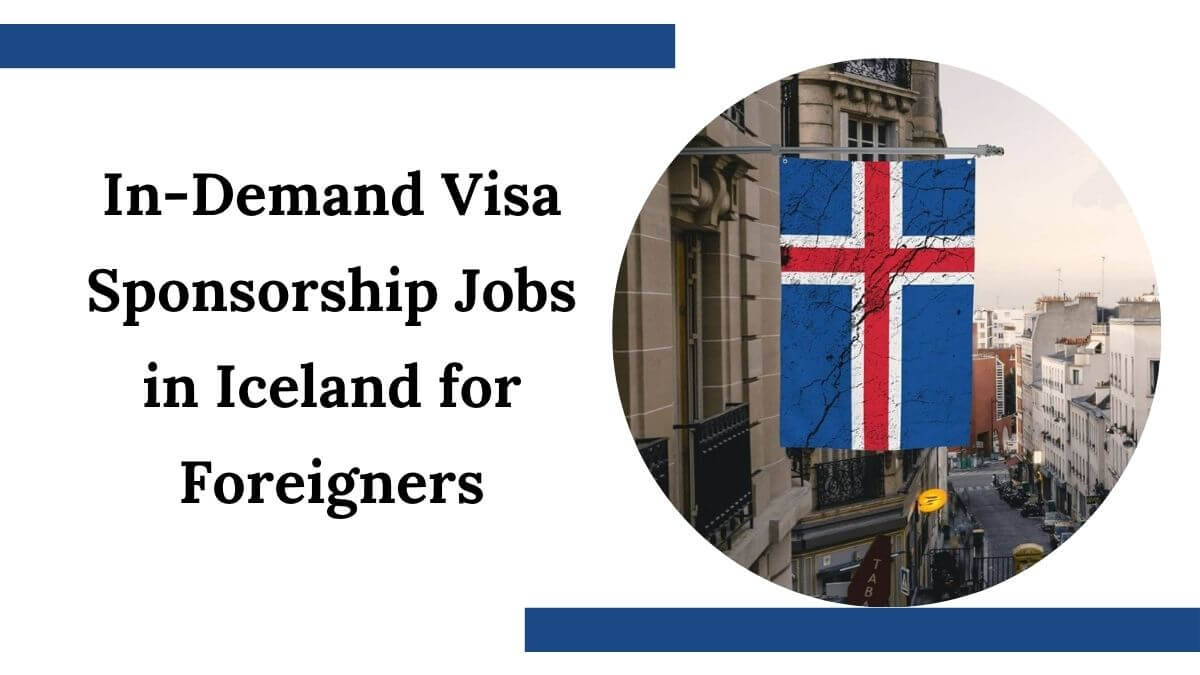Visa Sponsorship Costume Maker Jobs in Canada 2025

Costume making is a unique and creative profession that plays a vital role across industries including film, television, theatre, and emerging sectors like virtual and augmented reality. For talented individuals with expertise in design and garment construction, Canada presents exciting opportunities—with several employers offering visa sponsorship to skilled international applicants.
This comprehensive guide explores the current demand for costume makers in Canada, job duties, benefits, visa pathways, and practical steps for applying.
Job Prospects:
Canada continues to be a global hub for entertainment and performing arts, with hundreds of domestic and international productions each year. Cities like Toronto, Vancouver, and Montreal are central to the film and TV industries, while many provinces host vibrant theatre scenes and cultural festivals.
In 2025, the demand for skilled costume makers, designers, and wardrobe technicians is expected to rise, driven by:
- Expansion of streaming services and original content production
- Government support for the arts and cultural sectors
- Growth in immersive experiences (AR/VR performances and installations)
Pro Tip: Canadian productions often hire costume professionals at multiple levels—from entry-level stitchers to senior wardrobe supervisors.
Check Also: LMIA-Approved Web Designer Jobs in Canada – Apply Now
Benefits:
Working as a costume maker in Canada offers a mix of creative fulfillment and tangible benefits, especially for foreign workers entering through visa-supported roles.
- Visa Sponsorship: Many employers are open to sponsoring foreign workers via the Temporary Foreign Worker Program (TFWP) or Global Talent Stream.
- Competitive Salaries: Experienced costume makers can earn between CAD $40,000 – $70,000/year, depending on the production type and experience.
- Healthcare Access: Sponsored workers are typically covered under Canada’s universal healthcare system.
- Work-Life Balance: Canada is known for supporting employee well-being with regulated work hours and paid leave.
- Cultural Immersion: Work in a multicultural industry with exposure to diverse art forms, ethnic influences, and storytelling traditions.
- Creative Growth: Opportunity to work on award-winning productions and collaborate with top-tier creatives in film, theatre, and fashion.
Requirements:
To work as a costume maker in Canada—especially in a sponsored role—you’ll need to meet industry and immigration standards.
General Requirements:
- Education: Diploma or degree in Costume Design, Fashion Design, or a related field
- Experience: 2–5 years of hands-on experience; portfolio required
- Language: Proficiency in English or French, depending on the province
- Work Eligibility: Must qualify for a work permit (LMIA-supported or under Express Entry, if applicable)
Key Skills:
- Strong sewing and garment construction skills
- Understanding of historical and contemporary fashion
- Ability to interpret design sketches into 3D garments
- Comfort with pattern drafting, draping, and tailoring
- Clear communication and teamwork in production settings
- Flexibility to work evenings, weekends, or tight deadlines
Visa Sponsorship Opportunities:
Canada has multiple immigration streams that allow employers to sponsor foreign talent in niche and high-demand professions like costume making.
Visa Pathways:
- Temporary Foreign Worker Program (TFWP) – Employers apply for an LMIA to hire international talent
- International Mobility Program (IMP) – Certain roles may be exempt from LMIA, especially under international agreements
- Express Entry – For experienced costume designers or artists with broader skill sets
- Provincial Nominee Programs (PNP) – Some provinces target skilled trade and creative industry professionals
- Global Talent Stream (for creative tech) – For cross-disciplinary creatives in digital arts or VR/AR environments
Note: You must have a formal job offer from a Canadian employer before applying for a work permit with sponsorship.
Job Duties:
Costume makers work in pre-production, production, and maintenance phases. They are integral to storytelling and character development.
Responsibilities:
- Design Interpretation: Translate sketches into patterns and final garments
- Material Sourcing: Select appropriate fabrics, trims, and props
- Pattern Making: Draft and adjust patterns for custom fits
- Construction: Sew and assemble costumes with precision
- Fittings: Conduct fittings and make alterations for comfort and performance
- Maintenance: Repair and maintain costumes throughout the production run
- Budgeting: Manage costume expenses and stay within limits
- Team Supervision: Mentor junior assistants or interns
- Documentation: Keep detailed notes on alterations and fittings for continuity
Job Search and Networking:
Finding a job as a costume maker in Canada involves more than just applying online—it’s about visibility, portfolio quality, and industry connections.
Where to Search:
- Job Bank Canada (official government listings)
- WorkInCulture.ca (creative careers in Ontario)
- ArtJobs.com
- Mandy.com (film/theatre production gigs)
- Indeed Canada
- Theatre company websites (e.g., Stratford Festival, Shaw Festival)
Networking Tips:
- Join costume/fashion associations (e.g., IATSE Canada, CAFTCAD)
- Attend film festivals, fashion events, and theatre expos
- Use LinkedIn and Behance to showcase your portfolio
- Connect with costume designers, producers, or theatre managers
How to Apply for Visa Sponsorship Costume Maker Jobs in Canada 2025?
- Prepare a Professional Resume
- Emphasize sewing, design, theatre/film experience
- Include relevant certifications and technical skills
- Build a Strong Portfolio
- Showcase completed projects, fabric choices, sketches, and behind-the-scenes images
- Find LMIA-Supported Jobs
- Look for listings that mention “foreign worker welcome” or “visa sponsorship available”
- Write a Targeted Cover Letter
- Express your passion for costume making and willingness to relocate
- Mention your eligibility and experience working in high-pressure creative environments
- Submit Applications
- Use online platforms, email directly, or go through talent agencies
- Follow Up and Interview
- Be prepared for video interviews
- Talk confidently about your creative process and work ethic
Conclusion:
In 2025, Canada offers promising career pathways for costume makers, with job growth in entertainment, theatre, and immersive arts. For those with the right skills, creativity, and adaptability, visa-sponsored positions can open the door to an enriching and dynamic life in Canada.
By building a strong portfolio, researching the right visa channels, and targeting supportive employers, you can turn your passion for costume design into an international career.
Frequently Asked Questions:
What types of visas are available for sponsored costume maker jobs?
Most commonly:
Temporary Foreign Worker Program (TFWP) with LMIA
Some applicants may qualify for Global Talent Stream if highly skilled
In rare cases, International Mobility Program (IMP) if exemptions applyHow much do costume makers earn in Canada?
The average salary ranges from CAD $20 to $35 per hour, depending on experience, employer, and union membership (for film/TV roles).
What does visa sponsorship mean for costume maker jobs in Canada?
Visa sponsorship means a Canadian employer is willing to help you obtain a work permit by applying for a Labour Market Impact Assessment (LMIA), which proves they need a foreign worker for the role.



